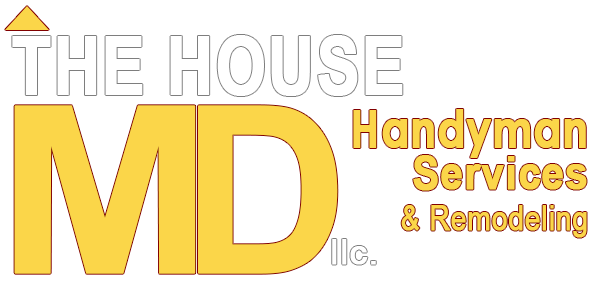Quick Fixes vs. Full Remodels: How to Decide What’s Right for Your Home
When it comes to home improvements, deciding between a quick fix and a full remodel can be tricky. You want to enhance your living space without overspending, but you also don’t want to end up regretting a patchwork solution. At The House MD, we understand that every homeowner’s needs are different. In this article, we’ll guide you through key factors to help you decide whether a quick fix or a full remodel is the right choice for your project.
Assess the Problem: Is It Cosmetic or Structural?
Before diving into a project, evaluate the issue you’re dealing with:
- Cosmetic Problems: If the issue is purely aesthetic, such as scuffed walls, outdated fixtures, or chipped tiles, a quick fix can often do the job. Fresh paint, new hardware, or simple repairs can breathe new life into your space without breaking the bank.
- Structural Problems: However, if you’re facing recurring issues like leaks, rotting wood, or damaged flooring, a full remodel may be necessary. Structural problems often indicate underlying issues that require more than just a surface-level solution.
Pro Tip: If you’re not sure whether the problem is structural, consult a professional handyman or contractor to assess the situation.
Consider Your Budget
Your budget is a major factor in deciding between a quick fix and a full remodel. Here’s how to weigh your options:
- Quick Fixes: Quick fixes are budget-friendly and can often be completed in a day or two. Tasks like patching drywall, replacing plumbing fixtures, or fixing trim are typically lower in cost and can make a big impact with minimal investment.
- Full Remodels: Full remodels, such as kitchen or bathroom renovations, require a larger financial commitment. However, they also offer a greater return on investment (ROI) in the long run, especially if you’re planning to sell your home in the future.
Budget Tip: Prioritize your needs and start with essential repairs before considering a larger remodel. This approach helps you manage costs while addressing the most urgent issues first.
Evaluate Your Long-Term Plans for the Home
Are you planning to stay in your home for years to come, or do you intend to sell soon? Your answer can help guide your decision:
- If You’re Staying Long-Term: Investing in a full remodel might be worthwhile if you plan to live in your home for the foreseeable future. It can increase comfort, functionality, and enjoyment of your space.
- If You’re Selling Soon: Quick fixes can be more practical if you’re preparing to sell your home. Cosmetic updates like fresh paint, minor tile repairs, and updated light fixtures can improve your home’s appearance without the time and cost of a full renovation.
Selling Tip: Focus on high-impact, low-cost fixes that will make your home more appealing to potential buyers without a significant investment.
Think About Timing and Disruption
Home improvement projects can disrupt your daily life, so consider how much time you’re willing to dedicate:
- Quick Fixes: These projects are usually fast and create minimal disruption. Tasks like plumbing fixture replacements or trim work can often be completed in a few hours, allowing you to get back to your routine quickly.
- Full Remodels: Remodeling projects, especially in key areas like the kitchen or bathroom, can take weeks to complete and may require you to temporarily relocate or adjust your daily activities.
Timing Tip: Plan larger projects during a time when the disruption will be less impactful, such as during a vacation or when you can easily access alternative spaces.
Determine Your Home’s Current Condition
The age and condition of your home can influence your decision:
- Older Homes: If your home is older, it may have hidden issues that a simple fix won’t resolve. In this case, a full remodel could be the better choice, as it allows you to address potential problems like outdated wiring, plumbing, or insulation.
- Newer Homes: For newer homes, quick fixes might be sufficient, as the overall structure and systems are likely still in good shape.
Inspection Tip: If you’re uncertain about your home’s condition, a professional inspection can give you a clearer picture of what repairs or updates are needed.
Quick Fixes That Pack a Punch
Not every problem requires a major renovation. Here are some impactful quick fixes that can transform your space:
- Painting and Trim Work: A fresh coat of paint and updated trim can make a room feel brand new.
- Fixture Replacements: Swapping out old faucets, light fixtures, or cabinet hardware can give your kitchen or bathroom a modern look.
- Minor Repairs: Fixing leaks, patching drywall, and repairing tile can prevent small issues from becoming bigger problems.
When a Full Remodel Is the Better Option
Sometimes, a full remodel is the only way to achieve the results you want. Consider a remodel if:
- You need to change the layout of a space for better functionality (e.g., expanding a kitchen or bathroom).
- There are recurring issues that simple repairs haven’t resolved (e.g., persistent leaks or electrical problems).
- You want to increase the value of your home significantly, especially if you plan to stay for the long term.
Need Help Deciding? Contact The House MD!
If you’re still unsure whether a quick fix or full remodel is right for your home, The House MD is here to help. We can assess your needs and provide a hassle-free consultation to determine the best approach for your project. Whether you need a simple repair or a complete transformation, we’ve got you covered. Contact us today!
